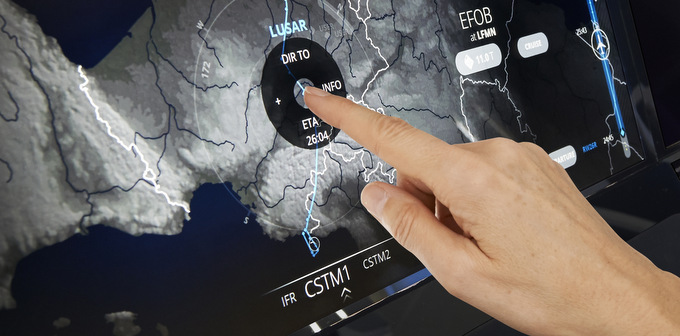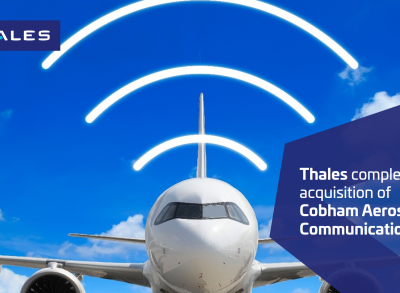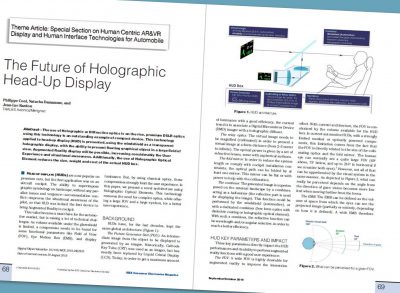Touchscreens in the cockpit: pure hype or genuinely helpful?
Touchscreen technology is already part of our everyday lives and sensory landscape — touching something makes us feel we control it a little better — but only recently has it reached the world of commercial avionics. Bringing the technology into the cockpit goes well beyond replacing buttons with icons on a display.

“Thanks to touchscreen interaction, we’re communicating with the object itself,” says Jean-Noël Perbet, head of scientific relations for Cockpit Engineering and Development at Thales. “Touchscreen interaction revolves around touch, obviously, but sight also plays a key role in optimising eye-hand coordination. Ultimately, the technology offers a much more natural and intuitive way of interacting with the system.”
Out of the smartphone…
Touchscreen technology made its public début in the early 2000s with the appearance of interactive point-of-sale terminals and museum exhibits. But Apple’s first iPhone in 2007 changed consumer habits and expectations forever. Then in 2010 came the iPad, the world’s first tablet computer. Who would have imagined that these new devices were to have such a profound impact on technological innovation in the cockpit?
Thales was quick to see the potential of touchscreen technology for commercial aviation. We had actually developed the first touchscreen displays for the Rafale fighter aircraft back in the 1990s, but commercial pilots had to wait more than 20 years to reap the benefits of touchscreen interaction in the cockpit. “As soon as the technology evolved and become widely available, it was ready for prime time exposure in commercial aviation,” continues Jean-Noël Perbet.
…and into the flight deck
Touchscreens may be intuitive, but using them to fly a plane is harder than it may seem. For a start, special security procedures are needed to avoid unintentional taps or movements that could jeopardise flight safety, especially during turbulence. Thales is also exploring the potential of multi-touch screens, which would bring the pilot a whole range of new functions and ways to work collaboratively with the co-pilot. New forms of interaction, such as flight plan modification with immediate visual feedback, are also in the pipeline.
Touchscreen technology is here to stay, and is set to become an integral part of the way pilots work. The next-generation Avionics 2020 cockpit concept developed by Thales, for example, includes large secure touchscreen display areas combined with multiple reconfigurable controls. The new cockpit organisation is designed for maximum usability, featuring multi-touch capabilities and completely intuitive interaction with all aircraft systems and functions.
A new generation of pilots who grew up with smartphones and tablets will expect nothing less!




